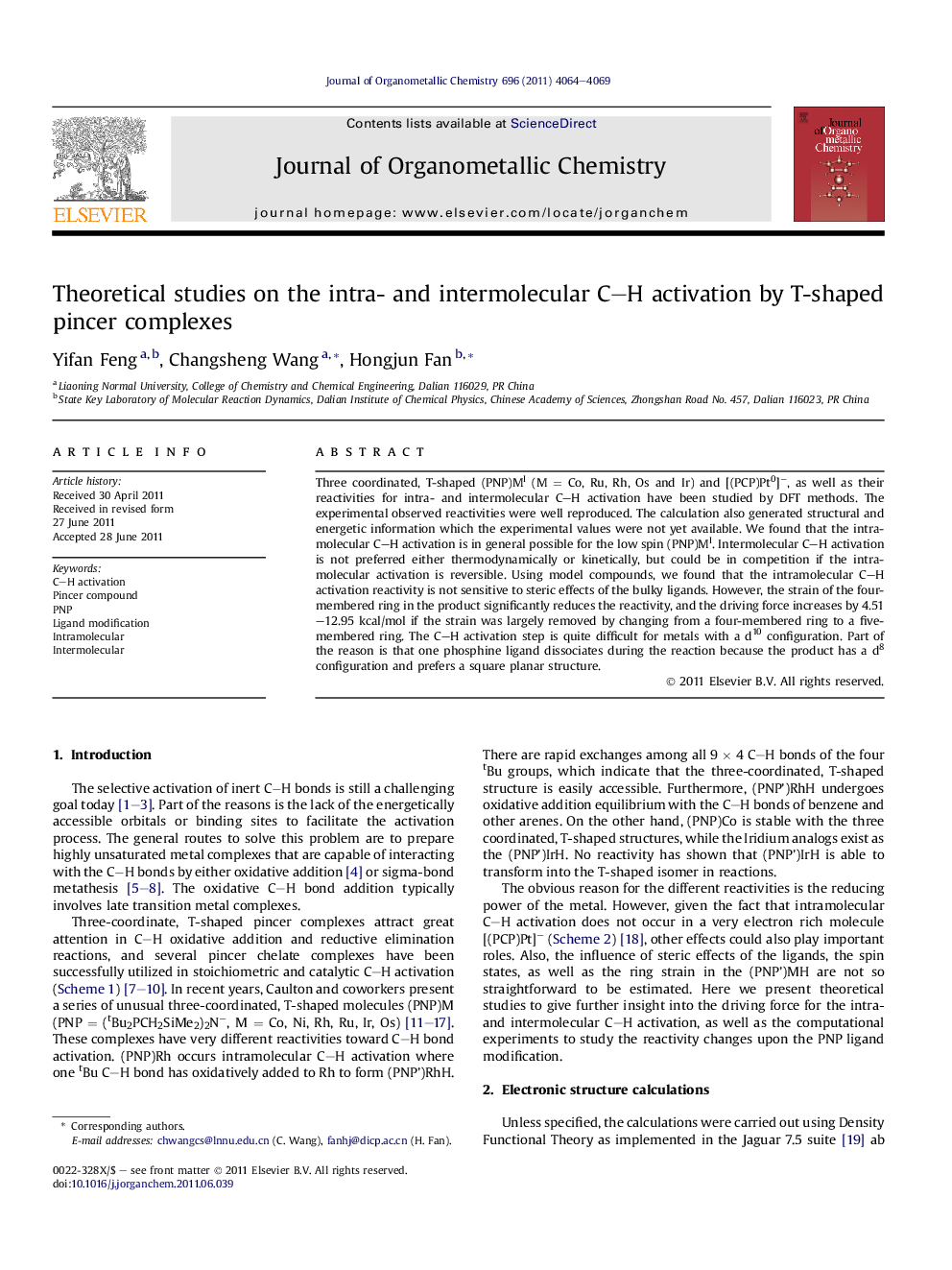| Article ID | Journal | Published Year | Pages | File Type |
|---|---|---|---|---|
| 1323610 | Journal of Organometallic Chemistry | 2011 | 6 Pages |
Three coordinated, T-shaped (PNP)MI (M = Co, Ru, Rh, Os and Ir) and [(PCP)Pt0]−, as well as their reactivities for intra- and intermolecular C–H activation have been studied by DFT methods. The experimental observed reactivities were well reproduced. The calculation also generated structural and energetic information which the experimental values were not yet available. We found that the intramolecular C–H activation is in general possible for the low spin (PNP)MI. Intermolecular C–H activation is not preferred either thermodynamically or kinetically, but could be in competition if the intramolecular activation is reversible. Using model compounds, we found that the intramolecular C–H activation reactivity is not sensitive to steric effects of the bulky ligands. However, the strain of the four-membered ring in the product significantly reduces the reactivity, and the driving force increases by 4.51–12.95 kcal/mol if the strain was largely removed by changing from a four-membered ring to a five-membered ring. The C–H activation step is quite difficult for metals with a d10 configuration. Part of the reason is that one phosphine ligand dissociates during the reaction because the product has a d8 configuration and prefers a square planar structure.
Graphical abstractFigure optionsDownload full-size imageDownload as PowerPoint slideHighlights► Intramolecular C–H activation of Low spin (PNP)M is in general exothermic. ► C–H activation driven force is not sensitive to steric effects. ► Ring strains reduce the driven force for intramolecular C–H activation. ► C–H activation of pincer compound with d10 metal is difficult.
